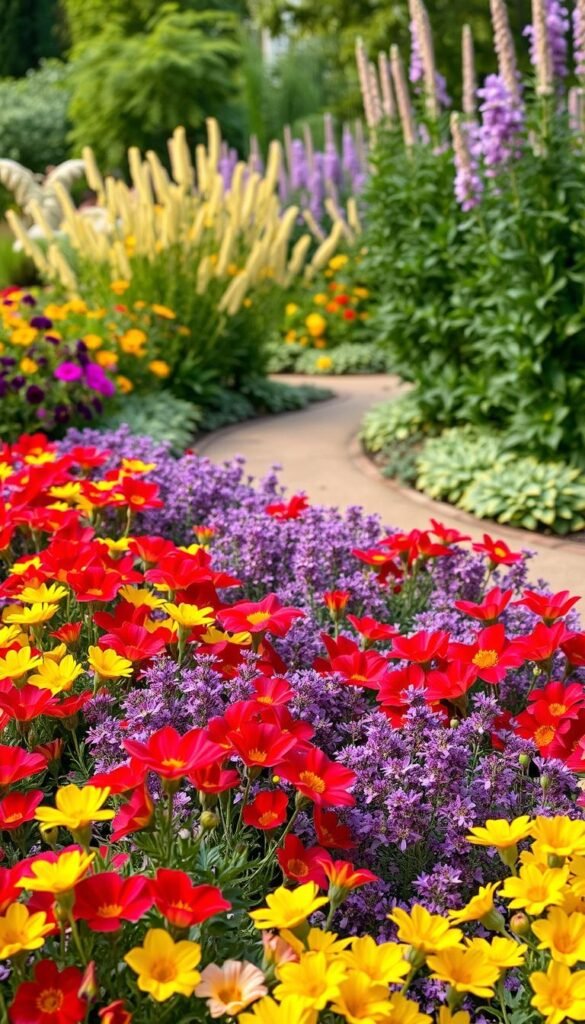Ever wonder why some outdoor spaces feel effortlessly stunning while others look chaotic? The secret lies in strategic plant arrangements that balance seasonal interest with natural rhythm. Unlike vegetable plots focused on function, ornamental beds demand careful planning to deliver year-round beauty.
Professional landscapers know grouping plants creates bold visual statements. Imagine drifts of lavender swaying together instead of lone blooms lost in a sea of green. This approach builds depth and harmony, transforming your yard into a living painting that evolves with the seasons.
Many enthusiasts accidentally create “plant collector” beds – one of this, two of that. While exciting at the nursery, this method often leads to disjointed results. You’ll learn how to avoid this pitfall while maintaining the joy of discovering new varieties.
Through this guide, you’ll master techniques used by experts. Discover how to coordinate bloom cycles, mix foliage shapes, and create flowing patterns that guide the eye. Your space will become a unified composition where every element works together – no design degree required.
Setting the Stage: Understanding Your Garden’s Vision

What transforms a simple backyard into a captivating outdoor retreat? It starts with matching your space to your lifestyle while working with nature’s blueprint. Before choosing plants, become a detective in your own yard.
Identifying Your Space and Goals
Measure your territory – is it a sprawling lawn or compact balcony? Track sunlight patterns through the seasons. South-facing areas bake in summer sun, while north zones stay cool. Your home’s architecture matters too – modern lines demand different partners than cottage styles.
Evaluating Light, Soil, and Existing Features
Existing structures set your color story. A red brick wall? Pair with purple salvias. Gray patio furniture? Silver foliage makes it pop. Observe how morning light softens colors while noon sun intensifies them.
| Setting | Opportunities | Constraints |
|---|---|---|
| Woodland Edge | Natural shade plants | Root competition |
| Urban Lot | Vertical gardening | Limited sunlight |
| Apartment Balcony | Container flexibility | Weight restrictions |
Brighten shady corners with gold-toned hostas or white impatiens. In blazing sun zones, deep purple flowers stay vibrant. Your goals steer everything – quiet reading nook? Choose soothing greens. Party central? Add fiery red blooms.
Planning with Color Theory: Inspiring Your Garden Palette
Have you ever noticed how certain outdoor spaces instantly lift your mood? The magic often comes from intentional color relationships that speak to our emotions. Like a painter’s canvas, your landscape becomes more compelling when hues work together purposefully.
Discovering the Basics of Color Theory
The color wheel unlocks endless possibilities. Primary colors (red, blue, yellow) form the foundation. Mix them to create secondary tones like vibrant orange or soothing purple. Tertiary blends add nuance – think coral roses against sage foliage.
Warm tones advance visually, making them perfect for focal points. A cluster of golden marigolds near seating areas energizes conversations. Cool shades recede, ideal for expanding tight spaces. Lavender borders can make narrow pathways feel wider.
| Color Type | Emotional Effect | Plant Example |
|---|---|---|
| Red | Boosts confidence | Celosia |
| Blue | Promotes calm | Hydrangea |
| Yellow | Encourages focus | Black-eyed Susan |
Balancing Warm and Cool Tones
Neutrals act as peacemakers between bold choices. Silver dusty miller softens clashes between hot pink petunias and crimson roses. White alyssum creates moonlight effects after sunset, extending your enjoyment into evening hours.
For harmony, try analogous schemes – neighbors on the color wheel like violet, blue, and teal. Want drama? Pair complementary opposites: orange lilies with blue salvias. Remember, foliage provides year-round textural contrast when blooms fade.
Designing Your Layout: Creating Flow with Curved Bed Lines
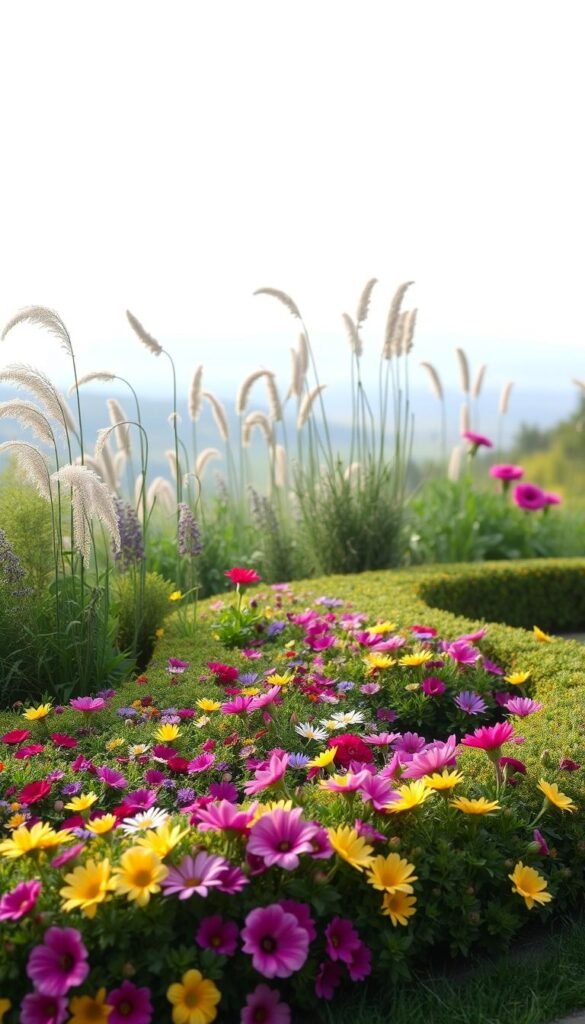
What if your yard’s shape could work for you instead of against you? Curved borders act like visual trickery, transforming cramped areas into dynamic spaces. Take Pam Frost’s urban lot – after fencing, her narrow strip resembled a bowling alley. Her solution? Swinging planting areas side-to-side like a graceful dance.
Space Expansion Through Fluid Shapes
Straight edges shout “boundaries,” while curves whisper “adventure.” Use a garden hose to map playful lines before digging. This flexible tool lets you test serpentine shapes that make beds appear deeper. Over seasons, gradually extend borders outward – each adjustment creates room for new plant pairings.
Curved layouts solve two problems at once. They prevent plant overcrowding while maintaining visual connections. Place sibling varieties near each curve’s peak for harmonious groupings. As you stroll along the path, each bend reveals fresh combinations – like turning pages in a living storybook.
| Bed Style | Visual Impact | Space Efficiency |
|---|---|---|
| Straight | Predictable | Limited |
| Curved | Dynamic | Enhanced |
The magic lies in perceived depth. Gentle arcs draw the eye forward, making small yards feel expansive. Strategic plant placement amplifies this effect – taller specimens at curves’ farthest points create layered interest. Your landscape becomes an unfolding discovery rather than a single glance.
Flower Garden Design Layout: Creating Cohesion with Color and Texture
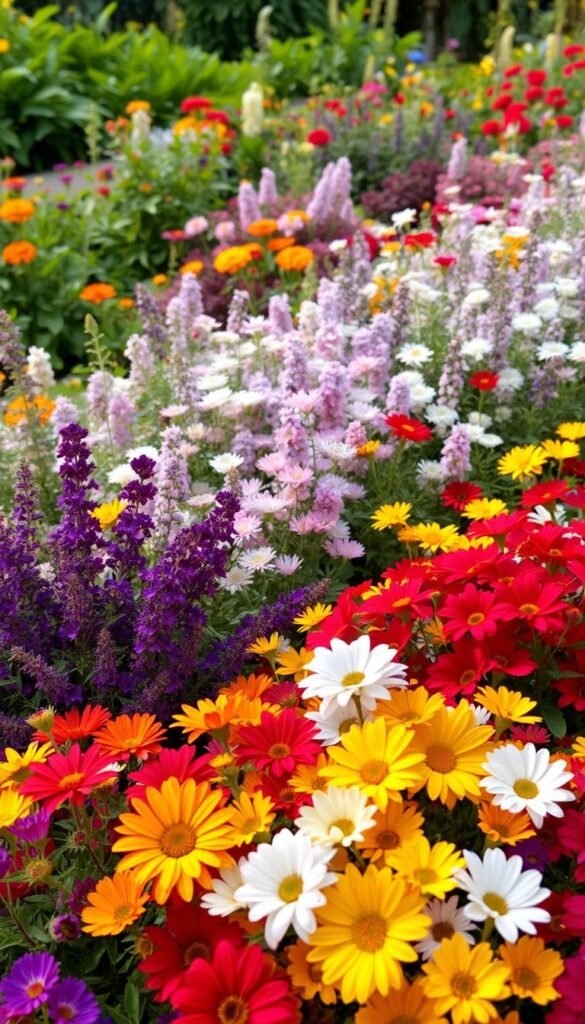
A well-orchestrated landscape keeps the spotlight on blooms from spring frost to autumn’s first chill. By aligning your plant selections with nature’s schedule, you’ll craft beds that transition seamlessly between seasons while maintaining structure and harmony.
Arranging Perennial Beds for Continuous Bloom
Stagger planting times like a conductor timing musical entrances. Early risers like peonies kick off the show, while late stars such as asters take their bow as temperatures drop. Three-season interest emerges when you layer bulbs, shrubs, and grasses with complementary bloom cycles.
Keep a seasonal journal to track performances. Note which areas need reinforcements when color fades—maybe July’s gap calls for daylilies. Photograph beds weekly to spot patterns invisible during daily care.
Grouping Plants to Enhance Visual Impact
Odd-number clusters create nature’s imperfect perfection. Try five coneflowers dancing together or seven salvias forming a violet wave. These repetitions build rhythm, guiding eyes through your space like punctuation in a favorite poem.
| Plant Quantity | Visual Effect | Example Pairing |
|---|---|---|
| 3 | Subtle repetition | Russian sage + lavender |
| 5 | Bold statement | Black-eyed Susans + coreopsis |
| 7+ | Dramatic sweep | Ornamental grasses + sedum |
Foliage acts as backup singers when flowers exit stage left. Silver lamb’s ear or burgundy heuchera leaves maintain visual harmony between acts. Remember: texture and form work year-round, even when petals fall.
Editing and Organizing: Refining Your Plant Selection
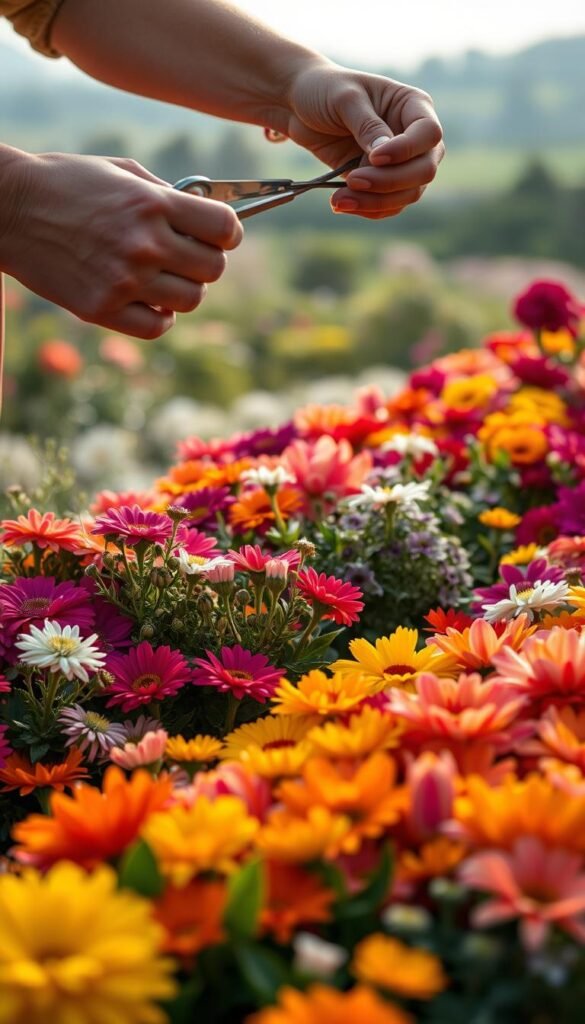
Why do some outdoor spaces radiate confidence while others seem apologetic? The answer often lies in strategic subtraction. Just as a sculptor removes marble to reveal art, gardeners must eliminate distractions to showcase their best performers.
Eliminating Underperforming Plants
Start by asking tough questions. Does that fussy rose bush bloom three weeks annually but demand weekly sprays? Are those trendy grasses spreading where they shouldn’t? Be brutal – your space deserves stars, not benchwarmers.
The “onesies” syndrome plagues many enthusiasts. Buying single specimens creates visual static. Imagine a choir where every singer chooses different lyrics. Replace solo acts with coordinated groups that sing in harmony.
| Problem Plant | Replacement Strategy | Result |
|---|---|---|
| Single purchases | Group 3-5 matching varieties | Cohesive drifts |
| High-maintenance divas | Drought-tolerant natives | Time saved |
| Unreliable bloomers | Long-flowering perennials | Season-long color |
“Editing isn’t destruction – it’s making room for excellence.”
Focus on workhorses like coneflowers that bloom for months. Swap delicate annuals for sturdy sedums. Each removal creates opportunities – maybe that empty corner needs a bird bath surrounded by catmint.
This process liberates your gardening budget. Instead of replacing failed experiments, invest in more of what thrives. Your space becomes a curated collection where every plant earns its place through beauty and resilience.
Enhancing Texture and Foliage for Visual Interest
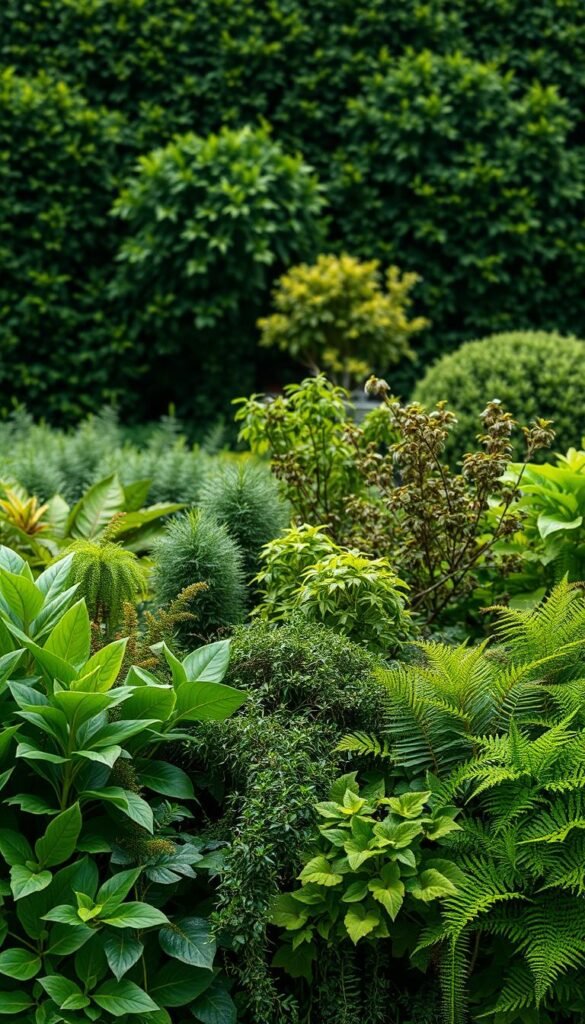
Your outdoor space holds hidden potential in every leaf and stem. While blooms come and go, strategic foliage choices deliver lasting impact through shifting seasons. Let’s explore how to maximize this often-overlooked design element.
Choosing Plants with Distinct Foliage Characteristics
Move beyond basic green with nature’s paintbox. Silver lamb’s ear adds moonlight effects, while burgundy coral bells create depth. Variegated hostas offer two-tone interest that lasts from spring frost to autumn rains.
Consider these dynamic pairings:
| Foliage Color | Companion Pairing | Visual Effect |
|---|---|---|
| Purple Heuchera | Golden Hakone Grass | Electric contrast |
| Blue Hosta | Chartreuse Sweet Potato Vine | Cool/warm balance |
| Silver Artemisia | Deep Green Ferns | Textural drama |
Incorporating Varied Textures to Create Depth
Crinkled leaves of oakleaf hydrangea play well with smooth magnolia foliage. Fuzzy stachys feels luxurious beside glossy holly leaves. For small spaces like urban balconies, mix fine-textured herbs with bold coleus.
Multi-season plants triple your design value. Ninebark shrubs offer spring flowers, summer berries, and winter bark interest. Ornamental grasses sway gracefully in fall winds while providing winter structure.
Utilizing Sibling Plant Pairings for Harmonious Groupings
Have you ever admired a stunning outdoor area that feels perfectly balanced? The secret often lies in sibling plant relationships – pairings that share traits while differing in size. This approach creates rhythm without monotony, like musical notes forming a melody.
The Big Brother/Little Brother Method
Take inspiration from Pam Frost’s technique: choose a standout specimen as your “big brother,” then find a smaller companion with matching features. A towering golden locust tree could partner with golden-edged shrubs, their shared yellow tones creating visual whispers across your space.
Look for these connections:
• Variegated dogwood paired with silver-leafed groundcover
• Spiky eryngium beside petite hostas with similar veining
• Curved grasses mirroring weeping shrubs’ forms
This strategy works wonders in curved beds, where repeating elements guide the eye naturally. For best results, limit sibling pairs to 30% of your arrangement – enough to unify without overwhelming. The remaining plants act as soloists, adding surprise moments.
Need more ideas? Explore proven combinations that thrive in similar conditions. Your space will feel thoughtfully curated, with each plant enhancing its neighbors through shared textures or hues.

